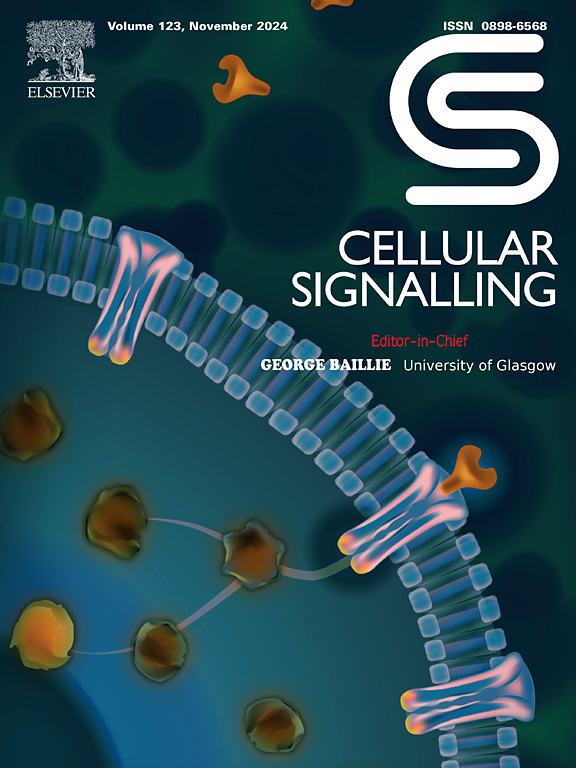肾素-血管紧张素-醛固酮系统对前列腺癌的新认识。
IF 4.4
2区 生物学
Q2 CELL BIOLOGY
引用次数: 0
摘要
前列腺癌是男性最常见的恶性肿瘤之一,其病理生理学受到多种因素的共同影响。肾素-血管紧张素-醛固酮系统(RAAS)是一个被广泛研究的途径,它在癌症生物学中扮演着新的基本角色,影响着细胞的生长、迁移、转移和死亡。这些过程受到 RAAS 各种成分的重大影响,包括肾素原、AT1R、AT2R 和 Ang 1-7/Mas 受体。尽管前列腺癌的病理生理学十分复杂,但以 RAAS 为靶点的治疗方法前景看好。RAAS 失调在前列腺癌中非常明显,传统上用于心血管疾病的治疗方法正被用于癌症治疗。RAAS 通路对新血管的形成(血管生成)、癌细胞向身体其他部位的扩散(转移)和细胞增殖有重要影响。在这一途径中,血管紧张素 II 及其受体发挥着关键作用。血管紧张素 II 通过 AT1R 刺激血管生成和细胞增殖,而 AT2R 则通过抑制细胞生长产生相反的效果。涉及 ACE2/Ang 1-7/Mas 的其他途径也为治疗干预提供了潜在目标,减轻了传统 ACE/Angiotensin II/AT1R 途径的影响。RAAS 的成分会影响多种信号通路,如雄激素受体 (AR)、NF-κB 和 PI3K/AKT/mTOR,这加深了我们对 RAAS 如何导致前列腺癌进展的理解。这也为治疗干预提供了新的可能性。本文章由计算机程序翻译,如有差异,请以英文原文为准。
New insights into prostate Cancer from the renin-angiotensin-aldosterone system.
Prostate cancer is among the most common malignancies found in men, with multifactorial changes occurring altogether to disrupt the pathophysiology of this gland. The Renin-Angiotensin-Aldosterone System (RAAS) is an extensively studied pathway that has newly attributed fundamental roles in cancer biology that impact cell growth, migration, metastasis, and death. These processes are significantly influenced by various components of the RAAS, including prorenin, AT1R, AT2R, and Ang 1–7/Mas receptors. Although the pathophysiology of prostate cancer is complex, targeting the RAAS shows promise as a therapeutic approach. RAAS dysregulation is evident in prostate cancer, and treatments traditionally used for cardiovascular diseases are being explored for cancer therapy. The RAAS pathway has significant effects on the formation of new blood vessels (angiogenesis), the spread of cancer cells to other parts of the body (metastasis), and cell proliferation. In this pathway, angiotensin II and its receptors have crucial functions. Angiotensin II stimulates angiogenesis and cell proliferation through the AT1R, whereas the AT2R has the opposite effect by inhibiting cell growth. Additional pathways involving ACE2/Ang 1–7/Mas also provide potential targets for therapeutic intervention, mitigating the impact of the traditional ACE/Angiotensin II/AT1R pathway. The components of the RAAS influence multiple signalling pathways, such as Androgen Receptor (AR), NF-κB, and PI3K/AKT/mTOR, which enhances our understanding of how it contributes to the progression of prostate cancer. This also provides new possibilities for therapeutic interventions.
求助全文
通过发布文献求助,成功后即可免费获取论文全文。
去求助
来源期刊

Cellular signalling
生物-细胞生物学
CiteScore
8.40
自引率
0.00%
发文量
250
审稿时长
27 days
期刊介绍:
Cellular Signalling publishes original research describing fundamental and clinical findings on the mechanisms, actions and structural components of cellular signalling systems in vitro and in vivo.
Cellular Signalling aims at full length research papers defining signalling systems ranging from microorganisms to cells, tissues and higher organisms.
 求助内容:
求助内容: 应助结果提醒方式:
应助结果提醒方式:


